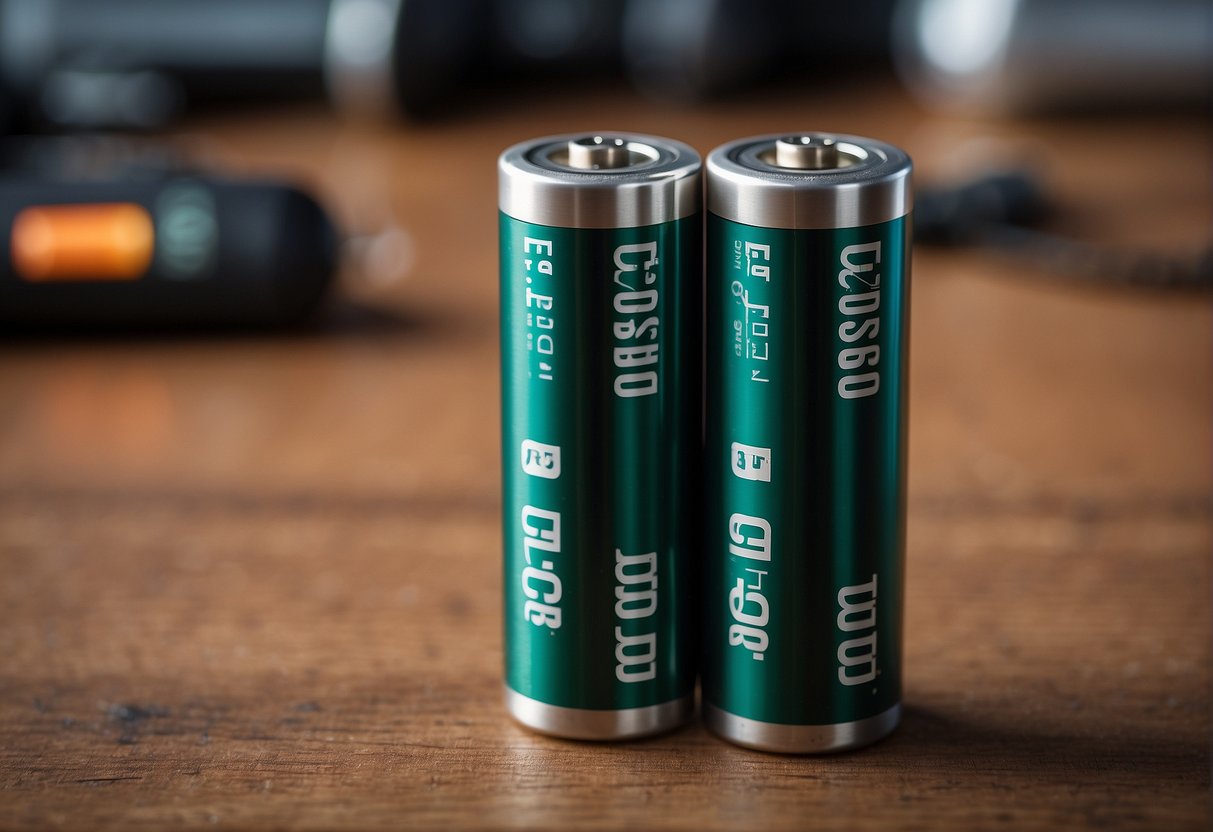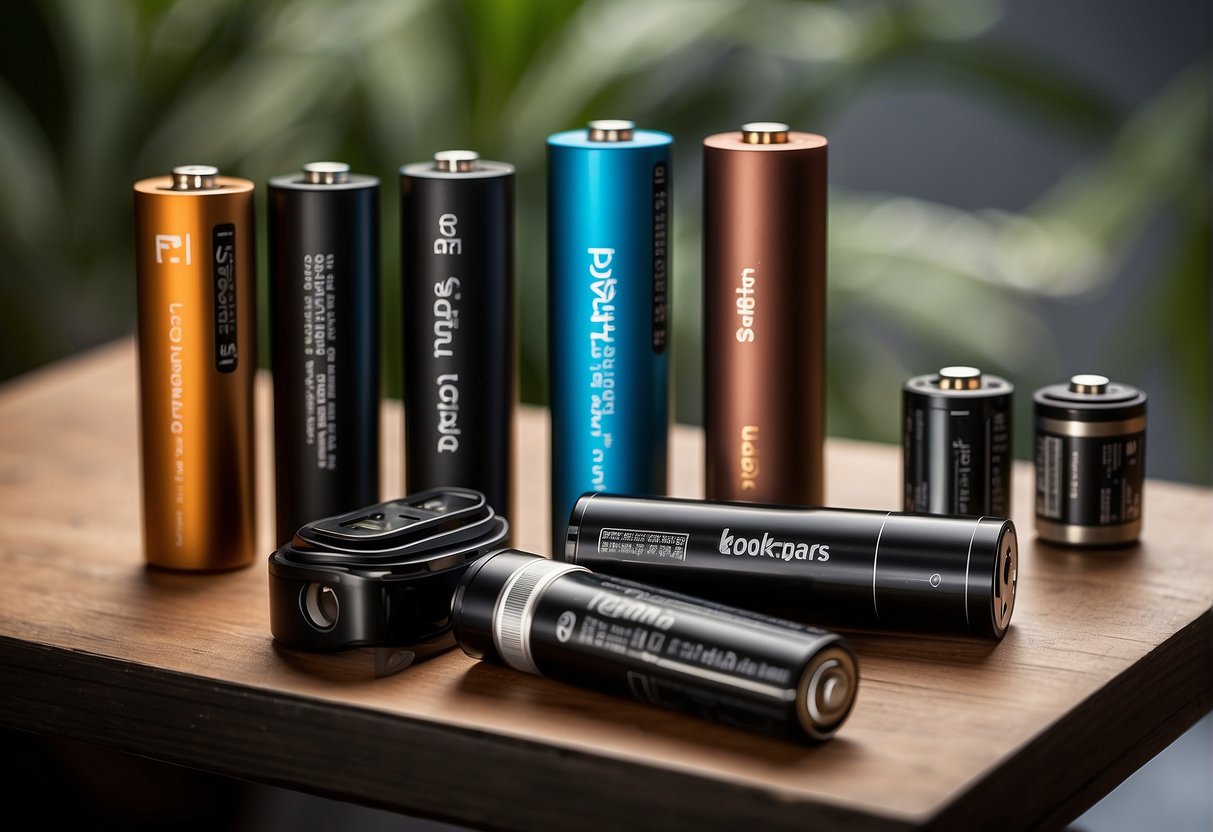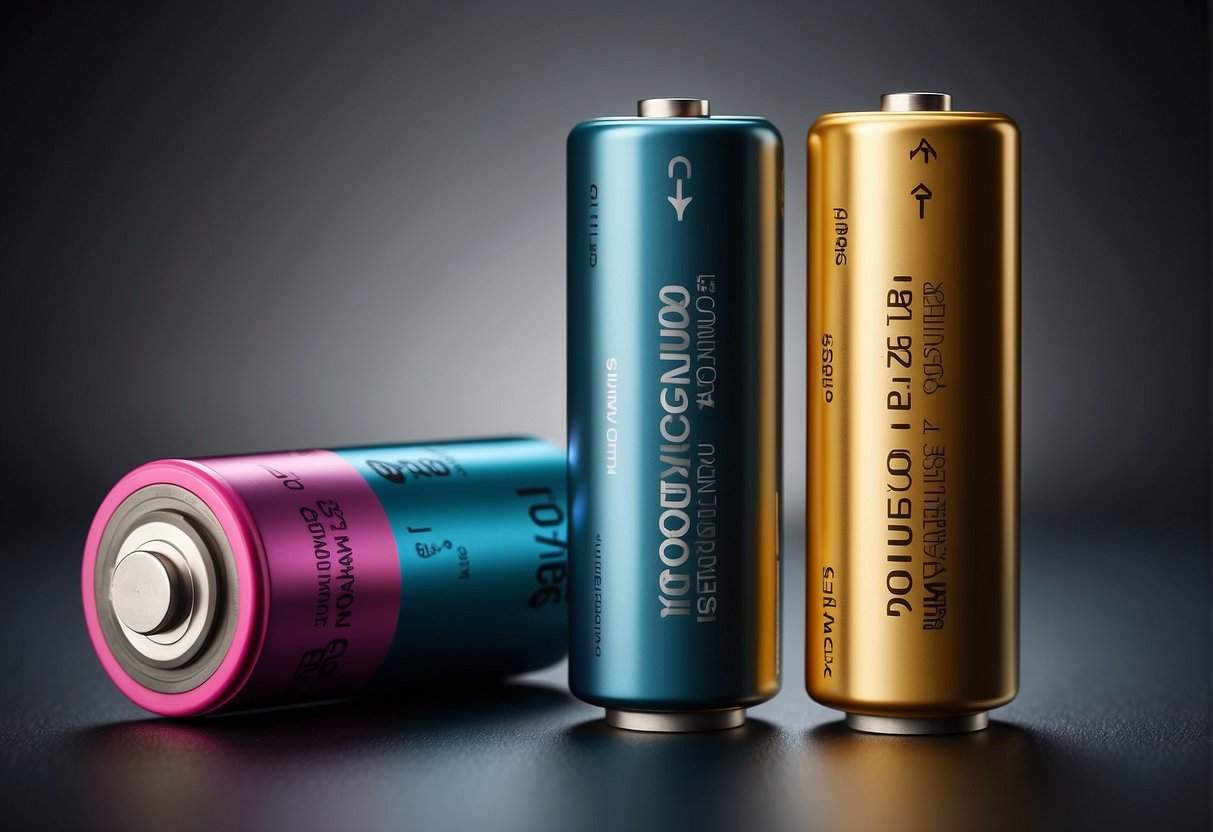As a consumer, it is important to understand the differences between batteries to ensure you choose the right one for your device. Two popular battery types are the 18350 and the 18650. While they may seem similar, there are some key differences that could affect your decision.
First, let’s start with the basics. Both the 18350 and 18650 are lithium-ion rechargeable batteries. They are commonly used in high-drain devices such as flashlights, vapes, and electronic cigarettes. However, the physical characteristics and performance metrics of these batteries differ, which could make one more suitable for your specific needs than the other.
Key Takeaways
- The 18350 and 18650 are both lithium-ion rechargeable batteries commonly used in high-drain devices.
- The physical characteristics and performance metrics of the batteries differ, which could affect your decision.
- When choosing between the two, consider factors such as size, capacity, and intended use.
Understanding Battery Basics
Lithium-Ion Batteries
Lithium-ion batteries are rechargeable batteries that are commonly used in electronic devices such as laptops, smartphones, and power tools. They are known for their high energy density, which means they can store a lot of energy in a small size. This is why they are preferred over other types of batteries.
Battery Chemistry and Voltage
Battery chemistry is the chemical composition of a battery, which determines its performance and characteristics. Lithium-ion batteries are made up of a positive electrode, a negative electrode, and an electrolyte. The positive electrode is typically made of lithium cobalt oxide, while the negative electrode is made of graphite. The electrolyte is a lithium salt in an organic solvent.
Voltage is the electrical potential difference between two points in a circuit. Lithium-ion batteries have a nominal voltage of 3.6 to 3.7 volts. The nominal voltage is the average voltage of the battery during discharge. It is important to note that the voltage of a lithium-ion battery does not decrease evenly during discharge. It starts at 4.2 volts and drops slightly before dropping rapidly to around 3.2 volts, at which point it stops working altogether.
In summary, lithium-ion batteries are rechargeable batteries that are commonly used in electronic devices. They have a high energy density and are made up of a positive electrode, a negative electrode, and an electrolyte. The nominal voltage of a lithium-ion battery is 3.6 to 3.7 volts, and its voltage decreases unevenly during discharge.
Physical Characteristics
Size and Dimension Comparison
When comparing the physical characteristics of 18350 and 18650 batteries, the most notable difference is their size. The 18650 battery measures approximately 18mm in diameter and 65mm in length, while the smaller 18350 battery has a diameter of about 18mm but is shorter at around 35mm. This difference in size means that the 18650 battery has a larger capacity than the 18350 battery.
Form Factor and Compatibility
Another important factor to consider when comparing 18350 and 18650 batteries is their form factor and compatibility. While both batteries are cylindrical in shape, the 18350 battery is smaller and lighter than the 18650 battery, making it a popular choice for compact devices such as flashlights and vape mods. On the other hand, the larger size of the 18650 battery makes it more suitable for high-powered devices that require a longer runtime.
It is important to note that not all devices are compatible with both 18350 and 18650 batteries. Some devices may only be designed to use one size or the other, so it is important to check the specifications of your device before purchasing a battery. Additionally, some devices may require a specific type of battery, such as a protected or unprotected battery, so it is important to do your research before making a purchase.
In summary, the physical characteristics of 18350 and 18650 batteries differ in terms of size, capacity, and compatibility. While the 18650 battery is larger and has a higher capacity, the 18350 battery is smaller and lighter, making it a popular choice for compact devices. When choosing a battery for your device, it is important to consider the specifications and compatibility requirements to ensure that you choose the right battery for your needs.
Performance Metrics
Capacity and Energy Storage
One of the key differences between 18350 and 18650 batteries is their capacity and energy storage. The 18650 battery has a larger capacity than the 18350 battery, which means it can store more energy and provide more power. On average, an 18650 battery has a capacity of 3000mAh, while an 18350 battery has a capacity of 1200mAh. This means that an 18650 battery can provide up to two times more power than an 18350 battery.
Battery Life and Run Time
Another important factor to consider when comparing 18350 and 18650 batteries is their battery life and run time. The battery life of a battery refers to the amount of time it can power a device before it needs to be recharged. The run time of a battery refers to the amount of time it can power a device on a single charge.
Due to their larger capacity, 18650 batteries generally have a longer battery life and run time than 18350 batteries. However, the actual battery life and run time will depend on the specific device being powered and the power consumption of that device.
In conclusion, when it comes to performance metrics, the 18650 battery outperforms the 18350 battery in terms of capacity and energy storage, as well as battery life and run time. However, it is important to note that other factors, such as size and weight, may also need to be considered when choosing between these two batteries.
Common Applications and Devices
When it comes to choosing between 18350 and 18650 batteries, it’s important to consider the devices and applications you plan to use them for. Here are some common applications and devices where these batteries are used:
Portable Electronics
Portable electronics such as small flashlights, e-cigarettes, and other compact devices often use 18350 batteries due to their smaller size and lighter weight. These batteries are also commonly used in toys, remote controls, and other small devices that require a power source.
High-Intensity Flashlights
High-intensity flashlights that require a lot of power to produce high lumens typically use 18650 batteries. These batteries have a higher capacity and can provide longer run times, making them ideal for flashlights used in search and rescue operations, camping, and other outdoor activities.
When choosing between 18350 and 18650 batteries, it’s important to consider the specific needs of your device. If you have a compact device that requires a battery with a smaller form factor, then 18350 may be the better choice. On the other hand, if you need a battery with a higher capacity and longer run time, then 18650 may be the way to go.
It’s also worth noting that laptops and other high-power devices typically use larger batteries such as 20700 or 21700 batteries. However, these batteries are not as commonly used in smaller devices such as flashlights and e-cigarettes.
Overall, both 18350 and 18650 batteries have their own unique advantages and disadvantages. By understanding the needs of your device and the specific features of each battery, you can make an informed decision and choose the battery that is right for you.
Choosing the Right Battery
When it comes to choosing between 18350 and 18650 batteries, there are a few factors to consider. As I have discussed earlier, 18650 batteries are larger and have a higher capacity, while 18350 batteries are smaller and more compact. However, choosing the right battery is not just about capacity and size. Here are a few other things to keep in mind:
Reputable Brands and Quality
It is important to choose reputable brands when it comes to batteries. Some of the popular brands for 18650 batteries include Keeppower, Samsung, LG, and Panasonic. These brands are known for producing high-quality rechargeable cells that are reliable and long-lasting.
Safety and Longevity
Safety is a crucial factor when it comes to batteries. You want to choose batteries that are safe to use and have a long lifespan. IMR 18650 batteries are known for their safety and longevity. They have a lower capacity than other 18650 batteries, but they are less prone to overheating and are safer to use.
When choosing between 18350 and 18650 batteries, you should also consider the specific needs of your device. If you have a high-drain device that requires a lot of power, you may want to choose an 18650 battery. However, if you need a smaller battery for a more compact device, an 18350 battery may be a better option.
In conclusion, choosing the right battery comes down to your specific needs and preferences. By considering factors such as reputable brands, safety, and device needs, you can make an informed decision and choose a battery that will meet your requirements.
Frequently Asked Questions
What are the main differences in size between 18350 and 18650 batteries?
The main difference between 18350 and 18650 batteries is their size. The 18350 battery is shorter than the 18650 battery, measuring 35mm in length and 18mm in diameter, while the 18650 battery measures 65mm in length and 18mm in diameter. This size difference can have an impact on the capacity and run time of the battery.
What applications are 18350 batteries typically used for?
18350 batteries are typically used in smaller devices that require less power, such as flashlights, vape mods, and other electronic devices. Due to their smaller size, they are often used in compact devices that need to be portable and easy to carry.
Can I use a different type of battery as a substitute for an 18650?
It is not recommended to use a different type of battery as a substitute for an 18650 battery. 18650 batteries are specifically designed for high-drain applications and provide a higher capacity than other types of batteries. Using a different type of battery can result in reduced performance and potential safety hazards.
Are 18350 batteries and CR123 batteries interchangeable?
18350 batteries and CR123 batteries are not interchangeable. While they may have similar dimensions, they have different voltage and capacity ratings. Attempting to use a CR123 battery in a device that requires an 18350 battery can result in reduced performance and potential safety hazards.
How do 18350 batteries compare in capacity and voltage to 18650 batteries?
18350 batteries have a lower capacity and voltage than 18650 batteries. While the exact capacity and voltage can vary depending on the specific battery, in general, 18650 batteries have a higher capacity and voltage than 18350 batteries. This means that 18650 batteries can provide longer run times and more power than 18350 batteries.
What should I consider when choosing between an 18350 and an 18650 battery for a specific device?
When choosing between an 18350 and an 18650 battery for a specific device, it is important to consider the power requirements of the device, as well as the size and weight of the battery. If the device requires high power and has enough space to accommodate a larger battery, an 18650 battery may be a better choice. However, if the device is smaller and requires less power, an 18350 battery may be a better fit.

Hi, I’m Sal Muller of Tooltrip.com. My DIY experience led me to understand essential power tools for home projects. Tooltrip.com guides enthusiasts and professionals in choosing right tools for any job. I provide concise top tool reviews for easier, efficient DIY.





